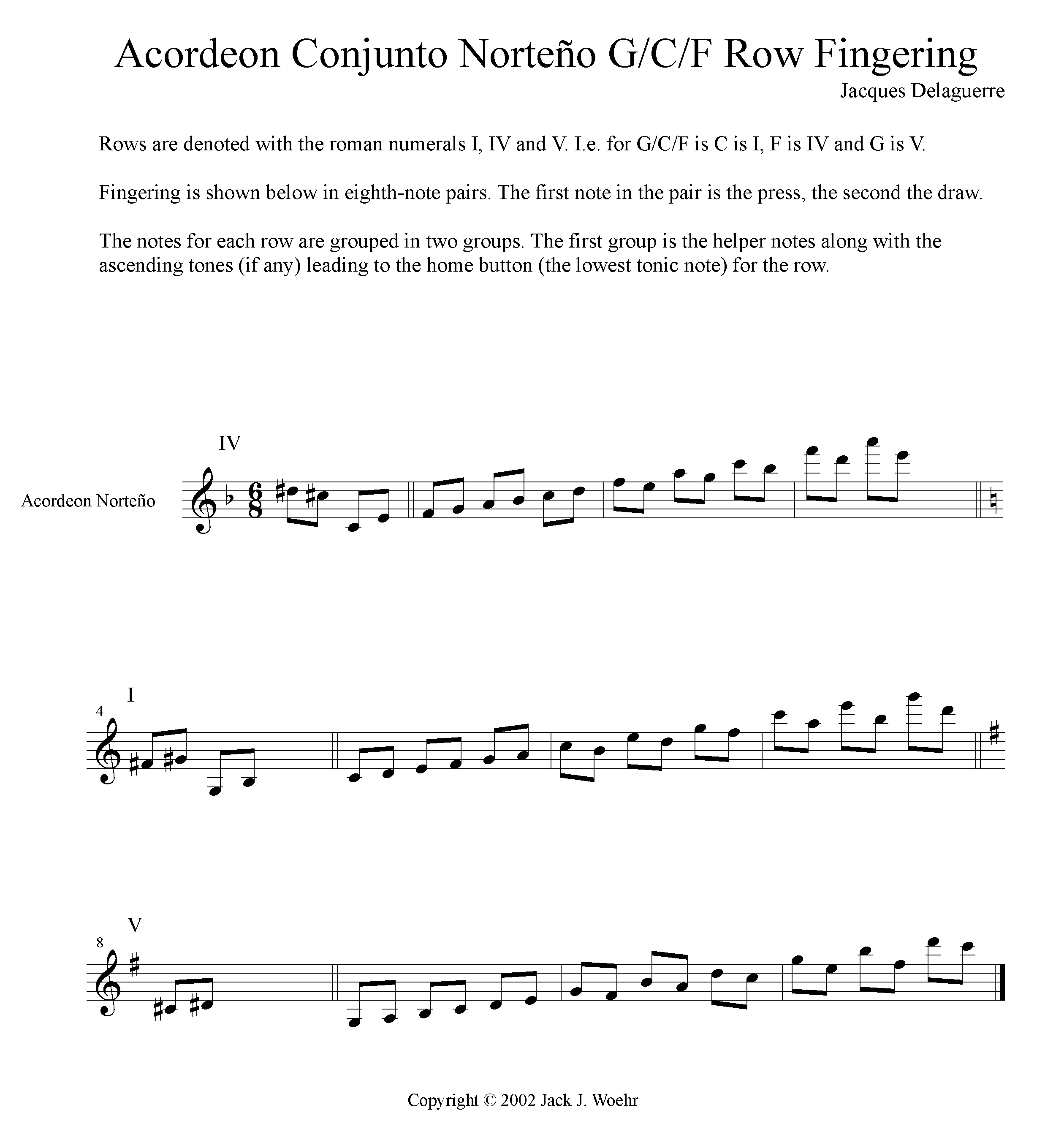
In the above illustration:
- The top row is closest to the bellows.
- Underlined notes reside in the octave below Middle C
- Notes with a single tick (') over them reside in the High C octave
- Notes with a double tick ('') over them reside in the 2nd High C octave.















